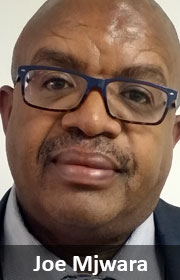 When the editor of TechCentral promised to cover extensively the recently published national integrated ICT policy white paper — and provide analysis of it — we were excited.
When the editor of TechCentral promised to cover extensively the recently published national integrated ICT policy white paper — and provide analysis of it — we were excited.
In the past two weeks, that excitement has turned into bewilderment as TechCentral’s pages have been filled with endless articles whose sole purpose is to bash the new policy and call for the status quo to remain.
There’s been a steady stream of single-track contributions to TechCentral lauding what is an unworkable and unsustainable market structure, one that has led to high communication costs and stunted the entry of new and innovative players in the sector.
There are public interest issues, beyond the selfish interests of the dominant incumbents, which need consideration in shaping the development of the sector for the future.
The views that have been raised, bashing the policy, were adequately debated during the thorough consultation process we followed. They did not carry the day in view of the competing interests for access and use of scarce resources. These views are not held by the entire sector, but just some players in it.
The suggestion is that there is something wrong with wholesale open-access networks. We need to correct the impression that wireless open access is by itself unworkable either because it hasn’t been done in the past or because it differs technologically from fixed networks.
It is important to remind everyone, once more, that ours is a technology-neutral regime that does not discriminate in accordance with the technology used. What walks and talks like a digital network is a digital network that must be regulated like all other networks.
Open access
The case for exceptional treatment of the wireless mobile networks is long gone because of technological developments that have made the sharing of networks by different providers possible. If the wireless open-access model has not been applied in the past, the real reason is because technologies did not permit it. Recent technological developments have allowed for the wireless networks to be shared.
For example, the handset was the biggest obstacle to the development of the open-access wireless networks as handsets contained only one radio front end. Now they contain a large number of front ends targeting different technologies and frequency bands enabling them to work across Wi-Fi, 2G, 3G and 4G.
Software-designed networks are a recent feature that has made it possible to implement network functions without the need to install new equipment. This has opened the way for agile networks that can support open access.
Most of the critics of government’s choice of open access deliberately ignore the competition dimensions
Interestingly, while the reality of technological advancement that enables the building of networks to facilitate and service different competing entities is never disputed, some flimsy arguments are advanced to spread doubts as to the technical soundness of the choice for wireless open access. None can dispute that the technology is here to allow for the entry of more players, which in the past were denied entry because of the scarcity of spectrum and the network technologies that could not support a multiplicity of users.
If the current market structure is maintained, it would not be because of the unavailability of the technologies to foster more competition and innovation but a desire to protect the incumbents and to maintain the status quo that has excluded small and medium-sized businesses. Such exclusions need to be corrected as early as possible.
Most of the critics of government’s choice of open access deliberately ignore the competition dimensions and the need for public policy to take into account the needs of all sector players rather than the few who have risen to the top. In reality, most of what has been written on this website is a repeat of statements by the dominant players who themselves were enabled to enter the market through concerted government policy actions and regulations, including forcing the then monopoly of Telkom to supply network services at asymmetric rates. It is estimated that the two biggest mobile operators benefitted to the tune of R50bn through this regulatory- and policy-sanctioned indirect support.
Access to spectrum
It is a fact that there are more than 400 licensed entities that require access to spectrum in order for them to effectively participate and compete in the ICT markets. Add to this number Internet services providers, over-the-top players and others for whom access to the mobile networks is critical for their success. These are the people whose rights need to enter the equation and whose needs should be balanced against the traditional players for the sector to expand and embrace innovative services. This is the real policy dilemma that must be resolved, not the fanciful notion of that what works best is what suits the dominant operators best.
For this to happen, policy must mandate the sharing of critical and scarce resources like spectrum instead of exclusively assigning it to those who are already privileged.

Another critical step is that access to infrastructure that cannot easily be duplicated must be opened up to more players. Owners of this infrastructure would be able to charge for the services rendered in a non-discriminatory and transparent way to competitors. If there is anything worth pondering, it’s this: why are the people who were at the forefront of demanding that the local loop of the fixed network be unbundled and opened to competition have now suddenly turned opponents to open-access principles?
What is crystal clear is that access to spectrum is the biggest barrier to participation in the growing broadband market. What also cannot be denied is that access to the infrastructure using the spectrum is critical for effective competition for the new entrants. If there is to be any growth in GDP as well as rising employment, it’s new entrants, broadband and Internet companies and small, medium and micro enterprises that will make more of a contribution compared to vertically integrated oligopolies that place insurmountable barriers to entry to new players.
Spectrum is a limited resource in a situation in which demand for it is increasing as a result of new bandwidth-hungry services
With the technological developments enabling open-access networks, the new discussion no longer focuses on past approaches to market structure and the assignment of resources. The reality is that spectrum is a limited resource in a situation in which demand for it is increasing as a result of new bandwidth-hungry services that have been introduced by the digital revolution. More services will require access spectrum as the Internet of things connects the millions of devices that are yet to be connected. It is inconceivable, as well as impractical, that anyone that wants to participate in the ICT evolution needs to deploy their network and fork out billions of rand in spectrum auctions that would in any case not provide a solution to their needs as there is no spectrum to satisfy everyone.
In many countries, current discussions are increasingly focusing on the shared use of the spectrum and networks from technical, business, policy and regulatory perspectives because it is seen as providing a solution to the scarcity problem.
Lessons from abroad
In Europe, there is ongoing work on “licence shared access” that allows spectrum that has been licensed for IMT to be used by more than one entity. This complements directives that imposed shared access of the infrastructure of dominant operators by mobile virtual operators.
The US president’s advisors on science and technology made proposals that led recently to the development of Federal Communications Commission rules to support the private sector’s sharing of spectrum with government agencies.
Mexico has set aside the entire 700MHz band for an open-access wireless network whose licensing is currently underway.

Rwanda currently runs a wireless open-access network in partnership with Korea’s KT Corp.
Kenya chose a wireless open access model that was sabotaged by the dominant operators.
Private-sector players who have built and managed these open access networks include Russia’s Yota, which operated a wholesale LTE network that covered 180 cities and 70m people. Czech Republic’s PPF is another example. The developed and developing worlds are embracing open-access networks, and so should we as we look into the future.
Whatever the approach is in today’s discussion on open access, the sharing of the spectrum and the allocation of the spectrum on non-exclusive terms is the norm as opposed to the antiquated single exclusive-use principles those opposing open-access principles advocate.
The debate is no longer whether open access is the right approach, but rather how to take into consideration the different socioeconomic profiles of countries where it’s implemented.
There is a growing expectation the world over that resources need to be pooled or shared so that they can be used more efficiently and effectively to serve growing user demand and the needs for new, competing innovative services.
The open-access network approach envisaged in the white paper is futuristic and factors in the reality that exclusive licensing arrangements for high-demand spectrum are unworkable.
Some past contributions to TechCentral have gone beyond challenging the technological soundness of opting for open access and wondered if shared networks can foster service-based competition, produce high-quality innovative services, bring about affordable rates and drive broadband into underserviced areas. The effects of the duplication of the networks in a situation in which the existing capacity is not fully utilised in all the networks and consequently the cost to the operators that get passed on as communication costs is never discussed as an obvious saving were the networks to be shared.
The reality is that the cost of operating multiple and separate networks will always be higher than operating a shared network. This truism is not challenged in any of the networked sectors of the economy, ranging from transport to energy. In the telecommunications environment, this cost impact is glaringly obvious if all four operators would be required to extend network coverage to reach all areas of the country, including the areas that are not economically sustainable.
Cost savings
At a conservative estimate, it would cost in excess of R15bn for each operator to build a network that has national scope. There are obvious capital spending and operational cost savings that cannot be denied in the efficient utilisation of a common network.
Also, the operators will be able to deliver more services to the entire population, instead of being limited to people who live in the areas covered by their networks.
Much has been said about mandated and non-mandated open access. The beauty of the open-access approach detailed in the white paper is that it is premised on a voluntary association of willing partners. The principle of non-exclusivity is embedded in the requirement that no one entity must have control of the operations of the network.
Current operators as well as other interested parties are required to come together and operate the network on open and non-exclusive way. Those who feel that they cannot participate in the open-access network will not be disadvantaged as they will still be entitled to acquire network services from the open-access network on open and non- discriminatory terms.
This is a win-win solution fit for the future.
- Joe Mjwara is acting director-general of the department of telecommunications & postal services




